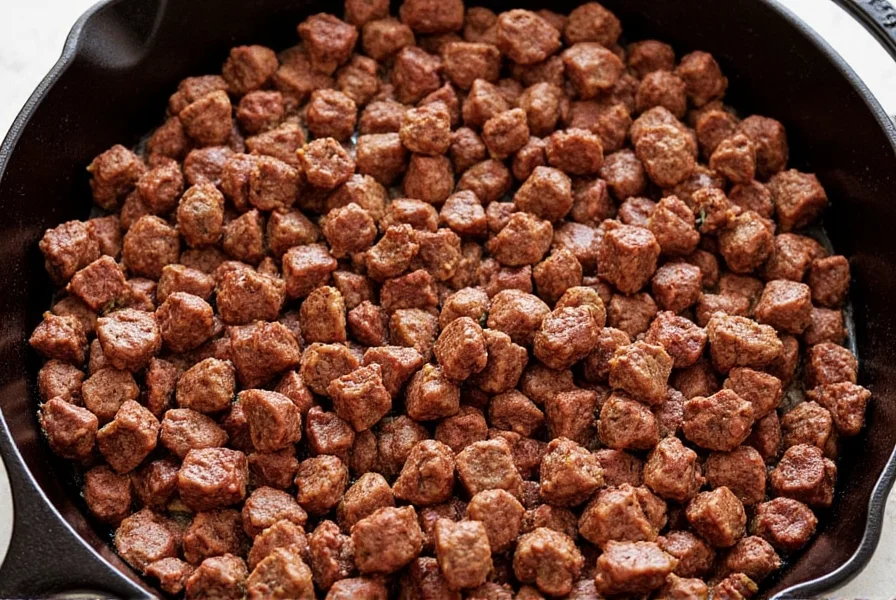When exploring serious eats chili methodology, you're engaging with a culinary philosophy that transforms a humble dish into a study of flavor chemistry and technique. The publication's approach combines food science with practical cooking wisdom, offering home cooks a systematic path to chili perfection that addresses common pitfalls while maximizing depth of flavor.
The Scientific Foundation of Serious Eats Chili Methodology
Unlike traditional chili recipes passed down through generations, Serious Eats begins with fundamental questions: Why do certain techniques work? What chemical reactions create the most desirable textures and flavors? Their research-driven approach has revolutionized how many home cooks approach this American classic.
At the heart of their serious eats perfect chili recipe philosophy lies the understanding that chili isn't just about heat—it's about building multiple flavor dimensions. Their testing revealed that the order of ingredient addition significantly impacts final flavor complexity. Browning meat properly before adding liquids creates Maillard reactions that form the flavor foundation most amateur recipes skip.

Essential Techniques from Serious Eats' Chili Research
After extensive recipe testing, Serious Eats identified several game-changing techniques that separate exceptional chili from ordinary batches:
| Technique | Traditional Approach | Serious Eats Methodology |
|---|---|---|
| Meat Preparation | Brown meat then set aside | Render fat slowly, build fond, deglaze properly |
| Spice Incorporation | Add all spices at beginning | Bloom spices in fat, add delicate spices later |
| Bean Integration | Add early in cooking | Add during last hour to maintain texture |
| Acid Balance | Rarely included | Finish with vinegar or citrus for brightness |
Ingredient Selection: Beyond the Basics
Their serious eats chili science research demonstrates that ingredient quality directly impacts final results. Rather than simply listing "2 lbs ground beef," they specify:
- Meat selection: A blend of 70% chuck and 30% short rib provides optimal fat-to-lean ratio
- Chili powder: Freshly ground from whole dried chilies outperforms store-bought blends
- Tomato element: Canned whole tomatoes crushed by hand yield better texture than pre-crushed
- Secret ingredient: A small amount of dark chocolate enhances depth without sweetness
This attention to detail in serious eats beef chili method represents their commitment to understanding how each component contributes to the final dish. Their testing revealed that the type of fat used for blooming spices significantly affects flavor extraction—animal fats work better with meat-based chilies, while neutral oils suit vegetarian versions.
Avoiding Common Chili Mistakes
Through rigorous testing, Serious Eats identified several pitfalls that undermine even experienced cooks' chili efforts:
- Over-reliance on canned chili powder: Most commercial blends contain stale spices and excessive salt
- Insufficient cooking time: True flavor integration requires minimum 2 hours of simmering
- Incorrect liquid ratio: Too much liquid dilutes flavors; Serious Eats recommends precise 3:1 solid-to-liquid ratio
- Neglecting acid balance: Finished chili often needs brightness from vinegar or citrus
- Overcrowding the pot: Prevents proper browning and creates steam instead of sear
Understanding these elements forms the foundation of serious eats chili technique that produces restaurant-quality results at home. Their approach to serious eats slow cooker chili adaptations maintains these principles while accommodating modern cooking equipment.
Practical Application for Home Cooks
While Serious Eats' laboratory-style testing might seem intimidating, their serious eats chili flavor development principles can be adapted to any kitchen. Start with these actionable steps:
- Take time to properly brown meat in batches—this foundational step creates complex flavor compounds
- Bloom spices in rendered fat for 30-60 seconds before adding liquids
- Use fresh garlic and onions rather than powdered versions for brighter flavor
- Simmer uncovered for final 30 minutes to concentrate flavors
- Add finishing acid (1-2 tsp vinegar or lime juice) just before serving

These techniques address the serious eats chili spice balance challenge by ensuring heat complements rather than dominates other flavors. Their research shows that capsaicin binds to fat molecules, which is why using appropriate meat fat content creates more balanced heat distribution.
Conclusion: The Serious Eats Philosophy in Practice
The value of Serious Eats' approach to chili extends beyond any single recipe. By understanding the why behind each technique, home cooks gain the knowledge to adapt and improve their chili regardless of available ingredients or equipment. This evidence-based methodology transforms chili from a simple weeknight meal into a culinary exploration where each batch teaches something new about flavor development and technique.
What makes Serious Eats' chili recipe different from traditional versions?
Serious Eats' approach focuses on the science behind flavor development, with precise techniques for meat browning, spice blooming, and controlled simmering. Their methodology emphasizes building flavor layers through specific timing of ingredient addition and understanding how chemical reactions affect final taste, rather than following traditional recipes without understanding the underlying principles.
Can I adapt Serious Eats' chili techniques for a slow cooker?
Yes, but with modifications. Serious Eats recommends browning meat and blooming spices in a skillet first, then transferring to the slow cooker. The slow cooker should only be used for the final simmering stage (2-3 hours on low) to prevent flavor dilution. Avoid adding delicate ingredients like fresh herbs or finishing acids until the very end of cooking.
What's the most common mistake people make when attempting Serious Eats' chili method?
The most frequent error is insufficient browning of the meat. Many home cooks crowd the pan or don't allow proper sear time, which prevents the Maillard reaction that creates foundational flavors. Serious Eats emphasizes taking time to brown meat in small batches with adequate space in the pan for proper caramelization.
How does Serious Eats recommend balancing heat in chili?
Their research shows that heat balance comes from multiple factors: using appropriate meat fat content (fat binds capsaicin), adding dairy or starch elements like beans to moderate heat, and finishing with acid which can counteract perceived spiciness. They recommend adding heat gradually and tasting throughout cooking rather than adding all spices at once.
Do I need special equipment for Serious Eats' chili technique?
No specialized equipment is required. A heavy-bottomed pot (Dutch oven preferred), basic kitchen knives, and standard measuring tools are sufficient. The methodology focuses on technique rather than equipment, though they note that cast iron or heavy stainless steel pots provide more even heating for proper browning compared to thin aluminum.











 浙公网安备
33010002000092号
浙公网安备
33010002000092号 浙B2-20120091-4
浙B2-20120091-4